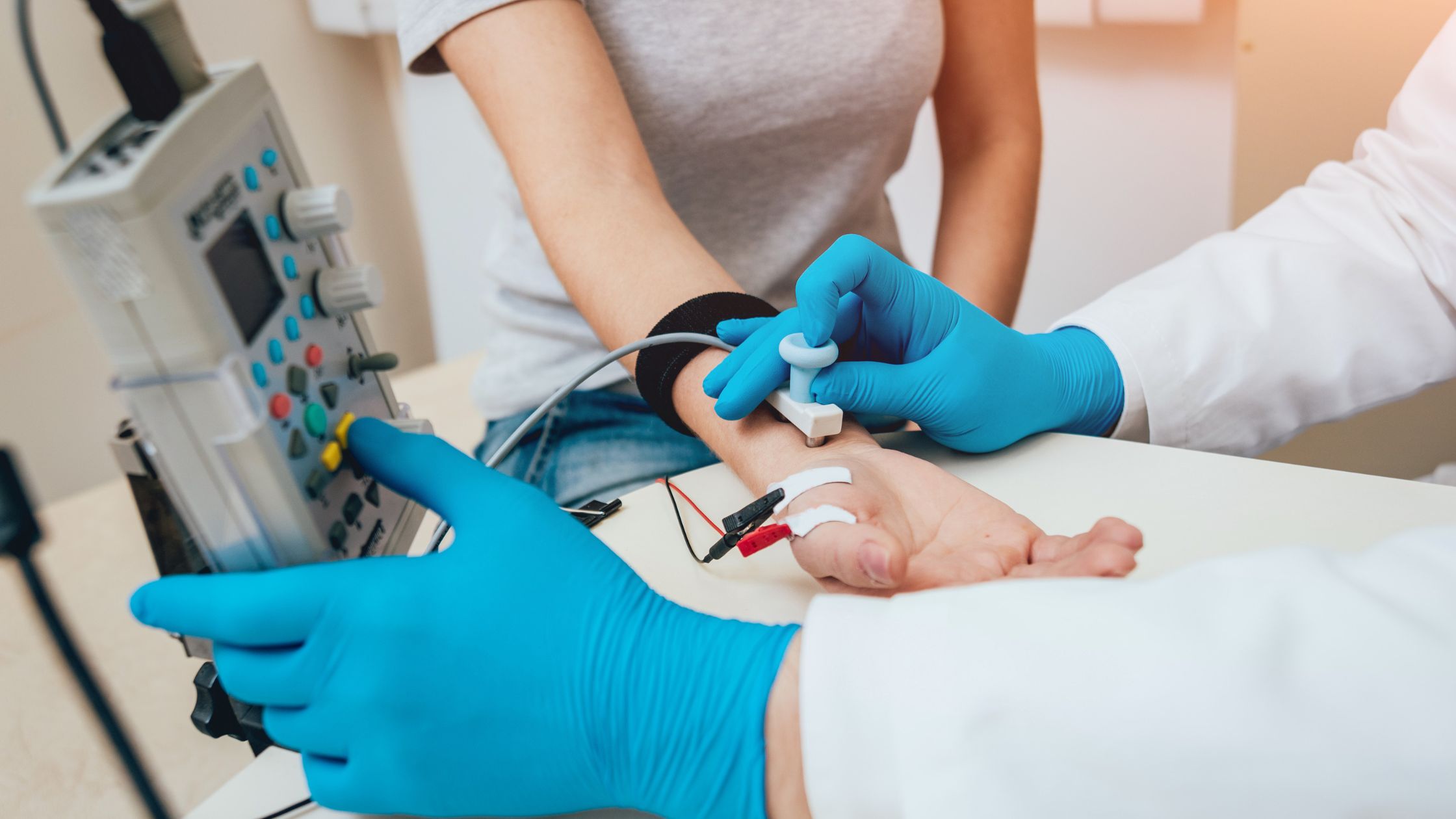
13 May Unveiling the Basics of EMG/NCS: Understanding Electromyography and Nerve Conduction Studies
Electromyography (EMG) and nerve conduction studies (NCS) are diagnostic procedures commonly used to assess the health and functioning of nerves and muscles. While these tests may sound intimidating to those unfamiliar with them, understanding their basics can demystify the process and alleviate any apprehensions. In this article, we will explore the fundamental aspects of EMG and NCS, including their definitions, the anatomy they involve, the reasons for their performance, and their crucial role in diagnosing neuromuscular disorders.
Defining EMG and NCS: What are Electromyography and Nerve Conduction Studies?
Electromyography (EMG) is a diagnostic technique that involves the recording and analysis of the electrical activity produced by muscles. This test helps healthcare professionals evaluate the health of muscles and the nerves controlling them. During an EMG, small electrodes are placed directly into the muscle tissue or on the skin overlying the muscles. These electrodes detect the electrical signals generated by muscle fibers in response to nerve stimulation or voluntary muscle contraction.
Nerve conduction studies (NCS), on the other hand, assess the function of nerves by measuring the speed and strength of electrical impulses as they travel along a nerve. NCS can identify nerve damage, determine the location and extent of nerve injury, and differentiate between different types of nerve disorders. This test involves stimulating a nerve with small electrical impulses and recording the nerve’s response using surface electrodes placed on the skin.
The Anatomy of Nerves and Muscles: Understanding the Structures Involved
To comprehend the significance of EMG and NCS, it’s essential to have a basic understanding of the anatomy of nerves and muscles. Nerves are fibrous structures that transmit electrical signals between the brain, spinal cord, and various parts of the body. They consist of bundles of nerve fibers, each surrounded by protective layers of connective tissue.
Muscles, on the other hand, are composed of muscle fibers grouped together into bundles called fascicles. These fibers contract and relax in response to nerve signals, enabling movement and muscle function. Nerves and muscles work in tandem, with nerves transmitting signals from the brain to the muscles, initiating movement, and muscles providing the mechanical force necessary for movement.
Why are EMG/NCS Performed? Common Reasons for Referral
EMG and NCS are performed for a variety of reasons, primarily to diagnose and evaluate conditions affecting the nerves and muscles. Some common indications for these tests include:
- Numbness and Tingling: Patients experiencing numbness, tingling, or weakness in their limbs may undergo EMG/NCS to identify the underlying nerve damage or compression.
- Muscle Weakness: Individuals with unexplained muscle weakness or atrophy may require EMG/NCS to assess the integrity of the nerves supplying the affected muscles.
- Neuropathic Pain: EMG/NCS can help diagnose neuropathic pain conditions, such as carpal tunnel syndrome or peripheral neuropathy, by identifying abnormalities in nerve function.
- Radicular Pain: Patients with radicular pain, characterized by pain radiating along the path of a compressed nerve root, may undergo NCS to determine the location and severity of nerve compression.
- Motor Neuron Diseases: EMG/NCS are valuable tools in the diagnosis and monitoring of motor neuron diseases, such as amyotrophic lateral sclerosis (ALS) or spinal muscular atrophy, by assessing muscle and nerve function.
The Role of EMG/NCS in Diagnosing Neuromuscular Disorders
One of the primary purposes of EMG and NCS is to diagnose neuromuscular disorders, which encompass a broad range of conditions affecting the nerves, muscles, or the neuromuscular junction (the point where nerves and muscles meet). These disorders can manifest as muscle weakness, cramping, twitching, or sensory disturbances and may result from various causes, including injury, inflammation, autoimmune diseases, or genetic factors.
EMG and NCS play a crucial role in diagnosing neuromuscular disorders by providing valuable insights into nerve and muscle function. These tests can help differentiate between different types of neuromuscular conditions, such as:
- Peripheral Neuropathies: EMG/NCS can detect abnormalities in nerve conduction velocity and amplitude, aiding in the diagnosis of peripheral neuropathies like diabetic neuropathy or Guillain-Barré syndrome.
- Myopathies: Muscle disorders, or myopathies, often present with characteristic patterns of muscle activity and response to nerve stimulation on EMG/NCS, helping clinicians distinguish them from neuropathic conditions.
- Motor Neuron Diseases: In diseases affecting the motor neurons, such as ALS, EMG/NCS can reveal signs of denervation and abnormal spontaneous activity in affected muscles, contributing to the diagnosis and monitoring of disease progression.
- Radicular Pathologies: Nerve conduction studies can identify nerve root compression or radiculopathy, which may result from conditions like herniated discs or spinal stenosis, guiding appropriate treatment strategies.
Contact Island Rheumatology Today!
In conclusion, electromyography (EMG) and nerve conduction studies (NCS) are invaluable diagnostic tools used to assess nerve and muscle function. By recording and analyzing the electrical activity of muscles and nerves, these tests provide crucial information for diagnosing and managing a wide range of neuromuscular disorders. Understanding the basics of EMG and NCS, including their definitions, the anatomy they involve, their indications, and their role in diagnosis, can empower patients and healthcare providers alike to navigate the diagnostic process with confidence and clarity.

